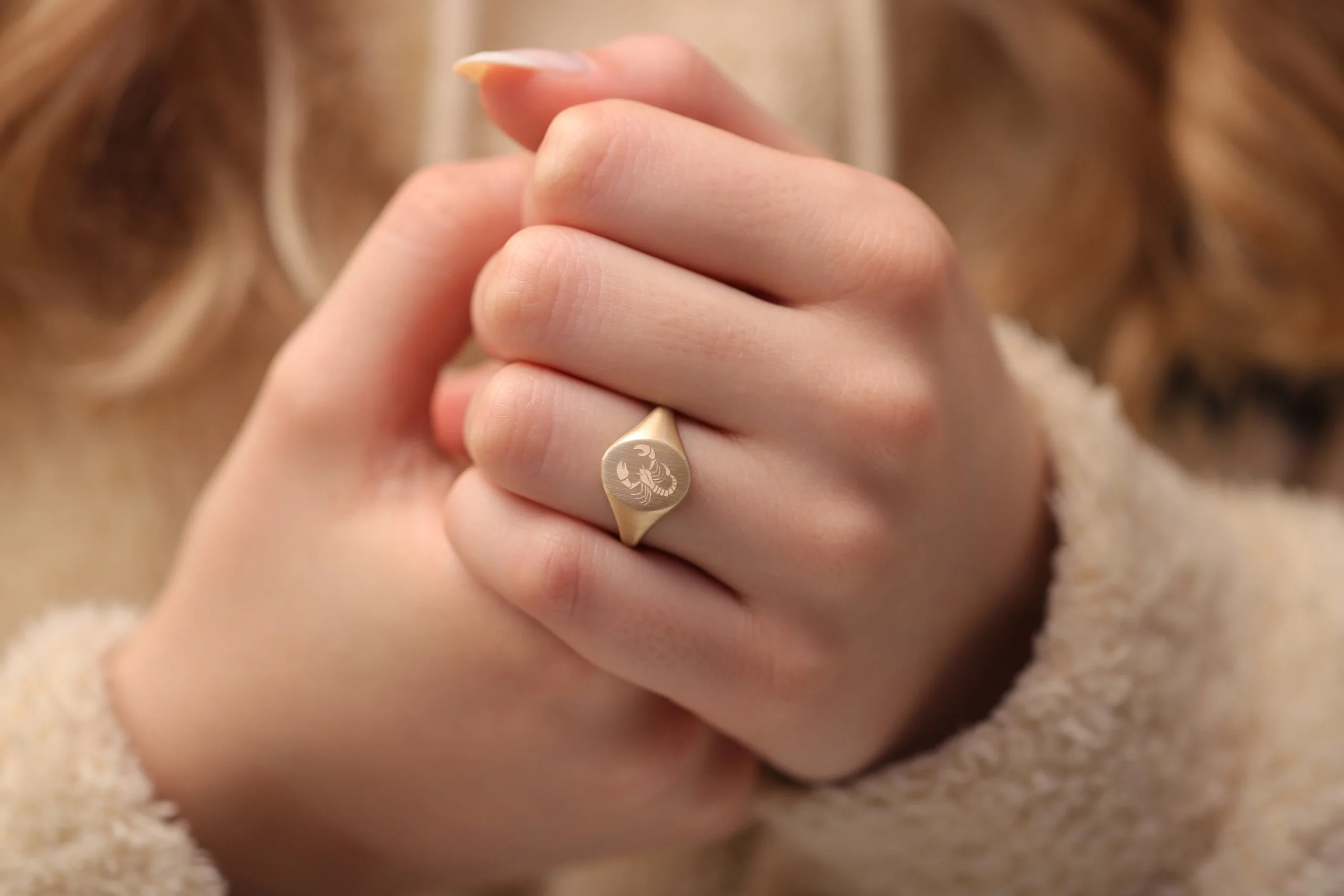Signet rings have a storied history dating back thousands of years. Once symbols of power and authority, these iconic rings have evolved into fashionable accessories worn by people from all walks of life. Today, signet rings blend history and style, making them a popular trend in modern jewelry. In this article, we’ll explore the journey of signet rings from their royal origins to their place in contemporary fashion.
Origins of the Signet Ring
The history of the signet ring stretches back to ancient civilizations, including Egypt, Mesopotamia, and Rome. These rings were originally used as seals, with the ring’s engraved design pressed into wax or clay to authenticate documents or letters. The signet ring served as a personalized stamp, symbolizing the authority and identity of the wearer.
In ancient Egypt, pharaohs and high-ranking officials wore signet rings bearing hieroglyphics or intricate designs that signified their power. Similarly, in Mesopotamia, rulers used these rings to endorse official documents, acting as a secure method of verifying their authenticity.
The Medieval and Renaissance Eras: Signet Rings as Symbols of Nobility
During the Middle Ages, signet rings became even more significant as symbols of nobility and family heritage. European monarchs and aristocrats wore these rings as a sign of their status and lineage. The engraved emblems often featured coats of arms, family crests, or unique symbols that represented the bearer’s noble lineage.
In this era, signet rings were typically passed down through generations as heirlooms. The ring’s design was not merely decorative; it was a functional tool. When pressed into hot wax, the seal acted as a signature, marking letters and decrees as genuine and ensuring that they could not be forged.
Signet Rings in the Victorian Era
By the 19th century, the significance of signet rings expanded beyond royalty and aristocracy. In the Victorian era, signet rings became a fashion statement for the emerging middle class. While they still held symbolic value, their use as a tool for sealing documents diminished due to the advent of modern identification methods.
Victorian signet rings were often intricately designed, featuring ornate engravings, gemstones, or family crests. The rings became more widely accessible, symbolizing personal identity, friendship, and even mourning, as some rings were crafted with the names or initials of lost loved ones.
The Decline and Revival of Signet Rings
In the 20th century, the practical use of signet rings declined further with advancements in technology and communication. However, their symbolism endured. During the two World Wars, soldiers wore signet rings engraved with personal emblems or initials, keeping them as sentimental tokens of home and family.
The resurgence of vintage fashion in the late 20th and early 21st centuries brought signet rings back into the spotlight. Celebrities, designers, and influencers began incorporating signet rings into their looks, blending traditional craftsmanship with modern trends. The demand for bespoke, personalized jewelry further fueled the revival, making signet rings a staple of contemporary fashion.
Signet Rings in Today’s Fashion
Today, signet rings are no longer exclusive to royalty and the elite. They have become a versatile accessory worn by both men and women. Modern signet rings are available in various styles, from minimalist and sleek designs to bold, statement pieces. Whether adorned with family crests, monograms, or unique symbols, they allow wearers to express their individuality.
The rise of personalized jewelry has contributed to the growing popularity of signet rings. Many people choose to engrave their rings with meaningful symbols, initials, or dates, transforming the ring into a cherished piece that reflects their personal story. Additionally, the resurgence of artisanal craftsmanship has led to an increase in custom-made signet rings, where customers can work with jewelers to create one-of-a-kind designs.
The Symbolism Behind Signet Rings
While signet rings have evolved in style and function over the centuries, they have consistently retained their symbolic value. Historically, these rings represented authority, heritage, and loyalty. In today’s fashion landscape, signet rings carry personal significance, often symbolizing identity, family, and individuality.
For some, a signet ring is a reminder of their cultural or familial heritage, while others may see it as a fashion statement that nods to tradition. The versatility of signet rings means they can be worn casually or formally, adding a touch of timeless elegance to any outfit.
Customization and Modern Trends
The contemporary trend of customization has further cemented signet rings as must-have accessories. Jewelers offer endless possibilities for personalization, allowing customers to choose materials, engravings, and designs that reflect their tastes and values. Gold, silver, and platinum remain popular choices, while some opt for unconventional materials like titanium or mixed metals.
Beyond traditional engravings, modern signet rings often feature artistic designs, initials, or minimalist symbols. The trend toward sustainability has also influenced the creation of signet rings, with many designers offering eco-friendly options made from recycled materials or ethically sourced gemstones.
The history of signet rings is a journey from ancient symbols of power and authority to fashionable, customizable pieces that resonate with people today. From the royal courts of Europe to the hands of modern trendsetters, these rings have proven to be more than just jewelry. They are cultural artifacts that connect the past and present while allowing for personal expression.
As signet rings continue to evolve, their blend of tradition, symbolism, and style ensures that they remain timeless accessories. Whether worn as a nod to history or as a modern fashion statement, the signet ring is a testament to the enduring appeal of personalized, meaningful jewelry.
